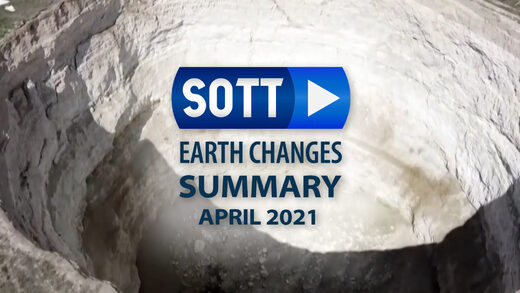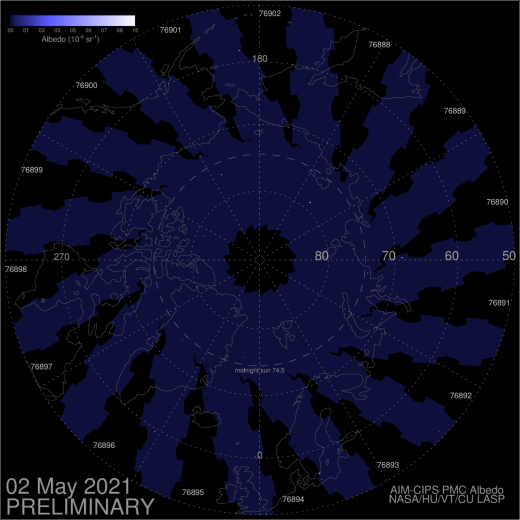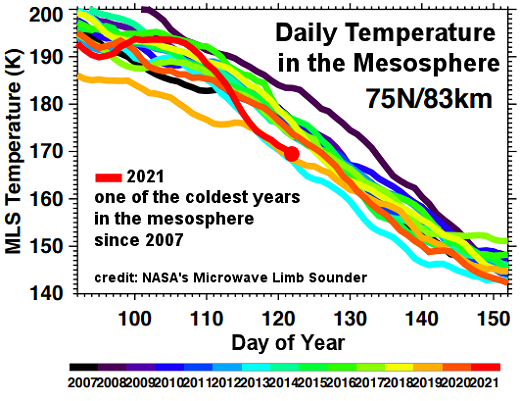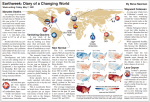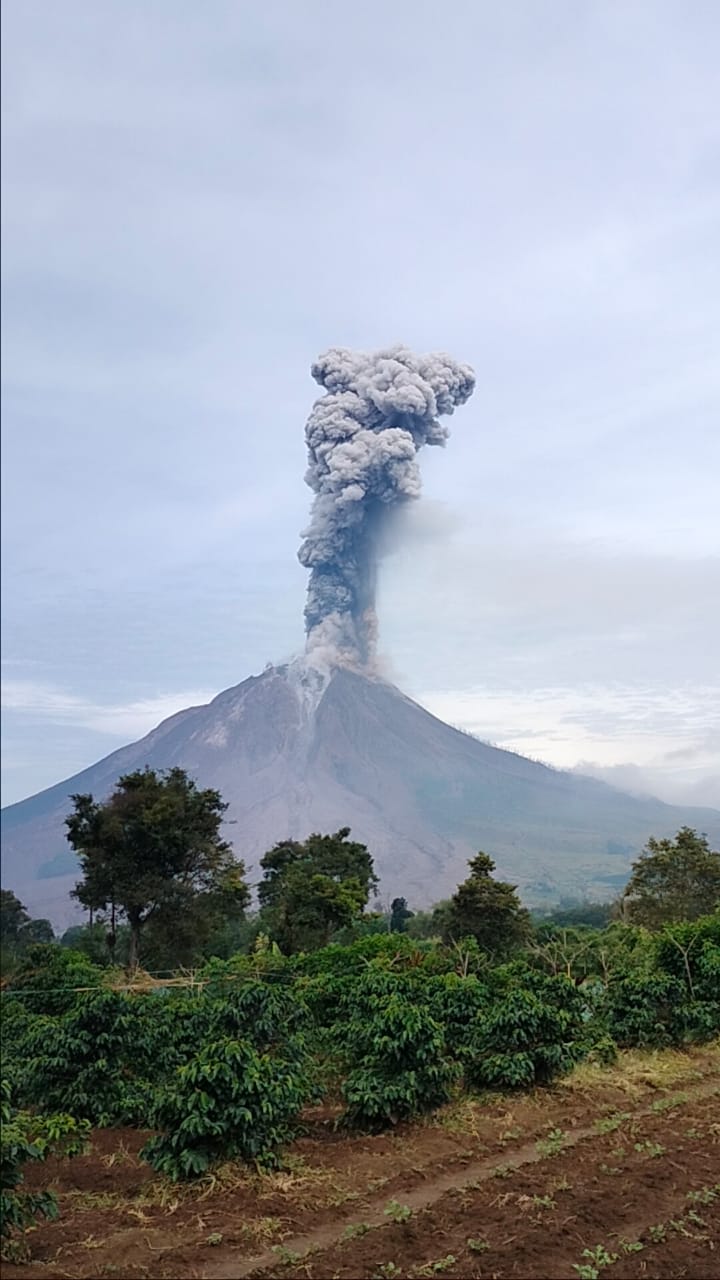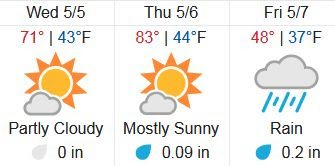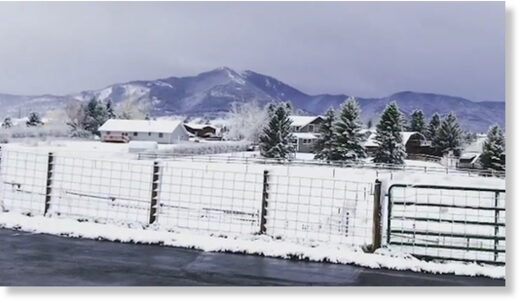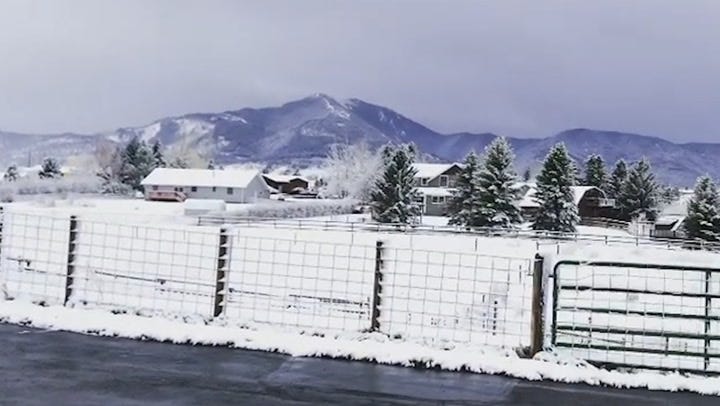3rd part:
Schwarzschild was an officer in the German army in World War I, and he did some of his most creative work in the trenches on the eastern front facing Russia. He found one of the first analytic solutions to Einstein’s general theory of relativity while he was there on the front lines. Alas, he died before he got home. The cause of death was not Russian bullets but an autoimmune disease. This was a real tragedy for science. Schwarzschild was the theorist who first figured out how the real Earth, including the greenhouse gases in its atmosphere, radiates to space. That is described by the jagged black line.
The important point here is the red line.
This is what Earth would radiate to space if you were to double the CO2 concentration from today’s value. Right in the middle of these curves, you can see a gap in spectrum. The gap is caused by CO2 absorbing radiation that would otherwise cool the Earth. If you double the amount of CO2, you don’t double the size of that gap. You just go from the black curve to the red curve, and you can barely see the difference. The gap hardly changes.
The message I want you to understand, which practically no one really understands, is that
doubling CO2 makes almost no difference. Doubling would replace the black curve by the red curve. On the basis of this, we are supposed to give up our liberties. We are supposed to give up the gasoline engines of our automobiles. We are supposed to accept dictatorial power by Bernie Sanders and Ocasio-Cortez, because of the difference between the red and the black curve. Do not let anyone convince you that that is a good bargain. It is a terrible bargain. The doubling actually does make a little difference. It decreases the radiation to space by about three watts per square meters. In comparison, the total radiation to space is about 300 watts per square meter. So, it is a one percent effect—it is actually a little less than that, because that is with no clouds. Clouds make everything even less threatening.
Finally, let me point out that there is a green curve. That is what happens if you take all the CO2 out of the atmosphere. No one knows how to do that, thank goodness, because plants would all die if you took all the CO2 out of the atmosphere. But what this curve is telling you is that the greenhouse effect of CO2 is already saturated. Saturation is a jargon term that means CO2 has done all the greenhouse warming it can easily do. Doubling CO2 does not make much difference. You could triple or quadruple CO2 concentrations, and it also would make little difference. The CO2 effects are strongly saturated.

You can take that tiny difference between those curves that I showed you, the red and the black curves, and calculate the warming that should happen. I was one of the first to do this: in 1982 I was a co-author of one of the first books on radiative effects of CO2. (Above) is my calculation and lots of other people’s calculations since. It is a bar graph of the warming per decade that people have calculated. The red bar is what has actually been observed. On the right is warming per decade over 10 years, and on the left, over 20 years. In both cases
the takeaway message is that predicted warmings, which so many people are frantic about, are all grossly larger than the observed warming, which is shown by the red bars.
So, the observed warmings have been extremely small compared to computer calculations over any interval that you consider. Our policies are based on the models that you see here, models that do not work. I believe we know why they do not work, but no one is willing to admit it.

Here is another comparison of models and observations.
The red curve here on the bottom is the year. It starts in 1975. It goes through 2025 because model predictions are included. The top curve is predictions by the international climate-alarm establishment, and the bottom blue and green curves are observations.
The blue circles summarize temperatures measured with balloons. You probably know that every day thousands of balloons are launched around the world in North America, Europe, Asia, and the southern hemisphere. They measure the temperature as they rise up to the stratosphere. So, we know what the temperature of the atmosphere has been from these really good balloon records.
The warming observed from balloons is about a third of the warming that has been predicted by models.
Nobody knows how much of the warming observed over the past 50 years is due to CO2. There is good reason to that think much of it, perhaps most of it, would be there even without an increase in CO2 because we are coming out of the Little Ice Age. We have been coming out of that since the early 1800s, before which the weather was much colder than now.
The green curve (in the chart above) is measurements from satellites, very much like the measurements of a temporal scanning thermometer. You can look down from a satellite and measure the temperature of the atmosphere. The satellites and balloons agree with each other, and they do not agree with the computer models. This is very nice work by John Christie at the University of Alabama-Huntsville.
The alleged harm from CO2 is from warming, and the warming observed is much, much less than predictions. In fact, warming is almost certainly beneficial — it gives slightly longer growing seasons. You can ripen crops a little bit further north than you could before. But there is even better news (to increasing atmospheric CO2): by standards of geological history, plants have been living in a CO2 famine during our current geological period.
This is a picture of our best estimate of past levels of CO2:

The vertical scale, RCO2, is the amount of CO2 in the past that was greater than it is today.
You can see on that scale that over most of the past, CO2 levels have been five times, ten times. even twenty times greater than today. This period, approximately the past 540 million year since the Cambrian Period, is the Phanerozoic Eon, when we have good fossil records of life on Earth. So, we know pretty well what life was doing during that time from the sediments.
During all of this period, with much higher CO2 levels, life flourished on Earth. In general, it flourished better when there was more CO2. Plants really would prefer to have two, three, four times more CO2 than we have today, and you can see plants already responding to our currently increasing CO2 levels.
Let me show you an example:

This is the greening of the Earth measured from satellites.
This picture shows areas of the Earth that are getting greener over the 20-year period.
What you notice is that everywhere, especially in arid areas of Sahel (you can see that just south of the Sahara) it is greening dramatically. The western United States is greening, western Australia is greening, western India is greening. This is almost certainly due to CO2, and the reason this happens is that CO2 allows plants to grow where 50 years ago it was too dry.
Plants are now needing less water to grow than they did 50 or 100 years before.
Let me show you another example of what more CO2 does in terms of making plants grow better:

This is a picture of Dr. Sherwood Idso, and it was actually an experiment done here in Phoenix back in the 1980s.
This pine tree, I believe, is a Mediterranean variety, the Eldarica pine. On the left is a pine tree growing in the current CO2 level at that time, which was about 380 parts per million, and on the right are pine trees growing in higher and higher CO2 concentrations.
You can see that the more CO2 the pine trees have available, the faster they grow. You can do this with almost any plant: corn, wheat, cotton—they all grow better with more CO2.
This is the so-called pollutant that you hear about in connection with “the climate “emergency.”
So, let me explain the basics of why that works:

Take a low-power magnifying glass and you will see the leaf is full of little holes or “stomata.” The little holes are to let carbon dioxide diffuse from the air into the moist interior of the leaf, where the leaf, using the special enzyme called rubisco, (one of the most ancient enzymes in the world and the most abundant protein), combines CO2 with a water molecule, H2O, to make sugar.
The energy to run this little chemical factory within the leaf is provided by sunlight. The problem with this is the need for holes in the leaf. Not only do CO2 molecules diffuse in from the air, but H2O molecules diffuse out through the same hole and dry out the leaf. For every CO2 molecule that diffuses into the leaf there can be a hundred water molecules that diffuse out.
So, the plant has an engineering dilemma: it has to have holes in its leaf to get the CO2 that it needs to live. But those same holes desiccate it; they dry it out, and the plant needs water to live. But plants are not stupid. All over the world, they are growing leaves with fewer or smaller holes in them in response to increasing concentrations of atmospheric CO2. If there is more CO2 in the air outside, leaves do not need as many holes, and they do not leak as much water either. That is why you are seeing the greening of the earth. It is from the plants themselves taking advantage of CO2 coming back to more historically normal levels.
There is a second important issue.
The enzyme I mentioned, rubisco, is very ancient. It was probably invented, on the evolutionary scale, three and a half billion years ago. At that time, there was little oxygen in the air. So, rubisco was designed in a way that lets it be poisoned by oxygen. Plants today have a hard time when there is not enough CO2 in the air. When rubisco is charged with chemical energy to make sugar, but it cannot find a CO2 molecule, it grabs an oxygen molecule, O2, instead. It uses the oxygen to create hydrogen peroxide and other nasty oxidizing molecules.
One reason for the antioxidants in your tea is to mitigate this problem. This mistaken use of an O2 molecule rather than a CO2 molecule is called photorespiration. Suppression of photorespiration is one reason plants grow better with more CO2. There is a special type of plant called C4 plant, which includes American corn and sugar cane, that has partially solved this problem. But as the CO2 levels increase, the old-fashioned C3 plants, without all the biochemical machinery to cope with photorespiration, out-compete C4 plants.
When you raise all these hard, scientific issues with the climate alarmists, the response is “how can you say that? 97 percent of scientists agree that there’s a terrible emergency here that we have to cope with.”
Here there are several things you should say:
First of all, in science truth is not voted on. It is not like voting on a law. It is determined by how well your theory agrees with the observations and experiments. I just showed you that the theories of warming are grossly wrong. They are not even close and yet we are making our policy decisions based on computer models that do not work. It does not matter how many people say there is an emergency. If it does not agree with experiments and observations, the supposed scientific basis for the emergency is wrong. The claim of a climate emergency is definitely wrong.
Secondly, even when scientists agree, what they agree on can be wrong. People think of scientists as incorruptible, priestly people. They are not that at all. They have the same faults as everybody else, and they are frequently wrong.

----------------------------------------------------------------
Continued below
